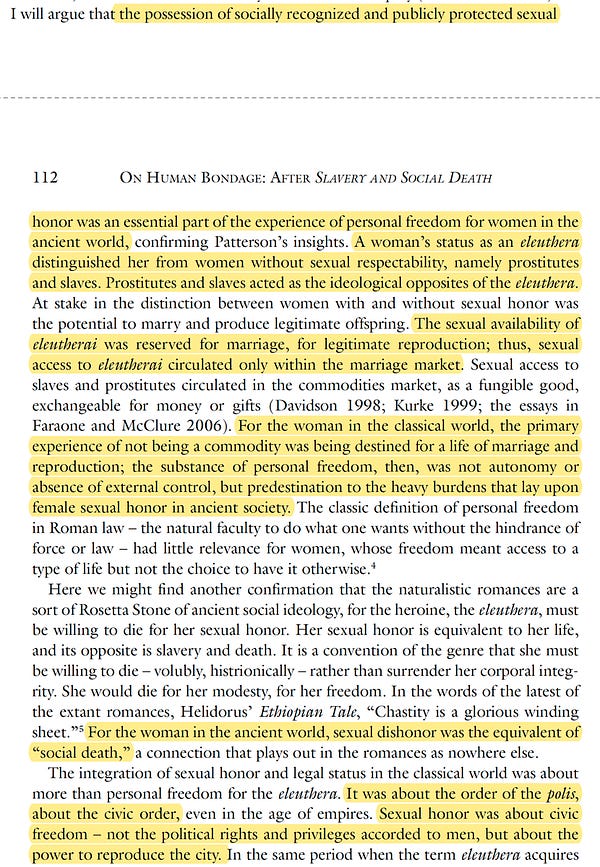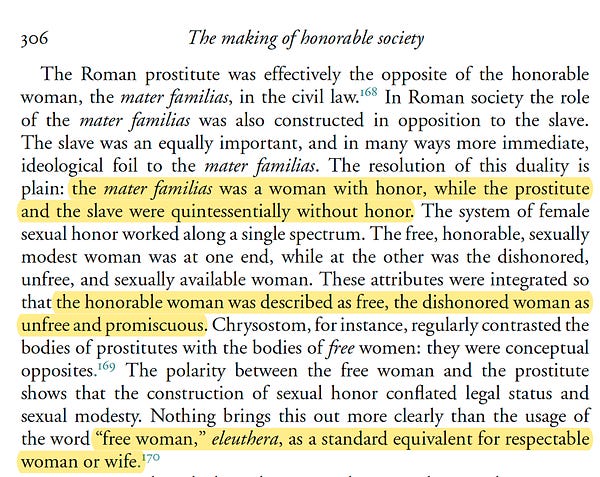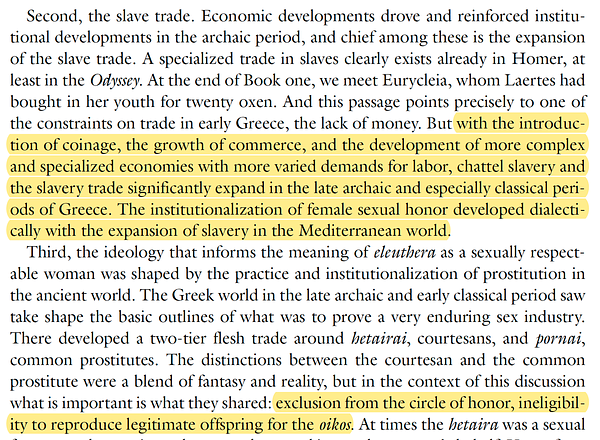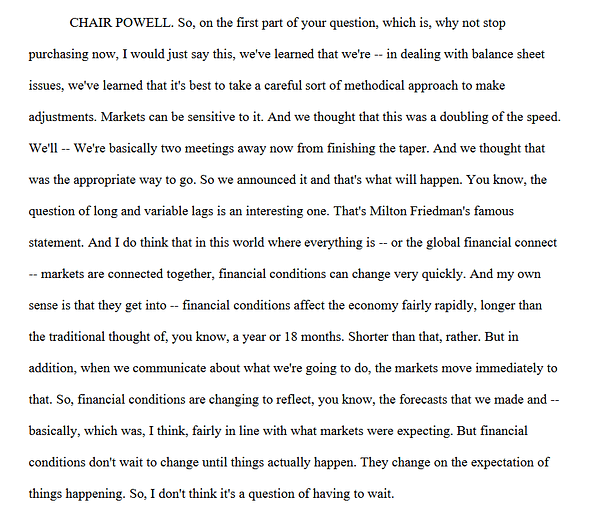Dan Froomkin on Why Reporters Punch Well Below Þeir Potential Weight
& BRIEFLY NOTED: For 2021-12-18 Sa
First:
The very sharp Dan Froomkin reports on his conversation with former New York Times reporter Nina Bernstein. This is, I think, the best thing I have read on why it is very ofen the case that the bulk of New York Times reporters I find myself reading = punch far below what I know to be their weight. The editorial system and its biases simply grind them down:
Dan Froomkin: When Facts Have A Liberal Bias, New York Times Editors Can Get Squirmy | Press Watch: ‘Nina Bernstein was covering homelessness for the New York Times in 1999 when then-mayor Rudolph Giuliani announced his intention to lock homeless families out of the city’s shelters for even minor rule violations. Bernstein wrote an article about how a similar policy was working in nearby Suffolk County, leading with the story of a family of eight reduced to sleeping on a fellow church member’s linoleum floor. She reported that some families were expelled because of bureaucratic mistakes. Simply by describing the facts, Bernstein was making Giuliani’s plan look cruel. And that created problems for her in the newsroom. “Getting it in the paper involved overcoming lots of editor pushback,” Bernstein recalled…. “To write factually, up close, with what I like to call intelligent compassion about these people’s lives basically invited charges of partisanship.”… It is nothing new for editors at the New York Times and elsewhere to be uneasy about calling too much attention to reality—when that reality has a liberal bias…. But that friction is particularly at issue today…. Bernstein said that in her experience, much of the resistance to bolder reporting comes from mid-level editors…. I recently started asking former news reporters what people like Rosen, Sullivan, and I can reasonably ask of today’s reporters, given the institutional strictures under which they operate. Bernstein said that one simple—though not easy—way that reporters could improve coverage of policy is to vow, like she did early in her career, to include in every story at least one real person who would be affected by the policy…. “The same skewed tilt toward ‘balance’ makes it harder to cover poverty, healthcare, welfare, education, and so on,” because exposing problems can be seen as taking sides. “We’re in a bad place,” Bernstein said, “if it’s inherently partisan to concretely and often write about what’s at stake in the lives of people”…
One Video:
Leonard Nimoy: The Star Trek Pilot <https://www.youtube.com/watch?v=Y8M8FK-CE6k>:
One Picture:
Forthcoming September 6, 2022, from Basic Books:
Slouching Towards Utopia: An Economic History of the Long Twentieth Century: Paragraph 8: Much good did follow from that.
Slouching Towards Utopia: An Economic History of the Long Twentieth Century: Paragraph 9: My estimate—or perhaps my very crude personal guess—of the average worldwide pace of what is at the core of humanity’s economic growth, the proportional rate of growth of my index of the value of the stock of useful ideas about manipulating nature and organizing humans that were discovered, developed, and deployed into the world economy, shot up from about 0.45 percent per year before 1870 to 2.1 percent per year afterward, truly a watershed-boundary crossing difference. A 2.1 percent average growth for the 140 years from 1870 to 2010 is a multiplication by a factor of 21.5. That was very good: the growing power to create wealth and earn an income allowed humans to have more of the good things, the necessities, conveniences, and luxuries of life, and to better provide for themselves and their families. This does not mean that humanity in 2010 was 21.5 times as rich in material-welfare terms as it had been in 1870: there were six times as many people in 2010 as there were in 1870, and the resulting increase in resource scarcity would take away from human living standards and labor-productivity levels. As a rough guess, average world income per capita in 2010 would be 8.8 times what it was in 1870, meaning an average income per capita in 2010 of perhaps $11,000 per year. (To get the figure of 8.8, you divide 21.5 by the square root of 6.) Hold these figures in your head as a very rough guide to the amount by which humanity was richer in 2010 than it was in 1870—and never forget that the riches were vastly more unequally distributed around the globe in 2010 than they were in 1870.
Very Briefly Noted:
Katie Martin: Investors Put ‘Policy Error’ at the Top of Their List of Concerns for 2022: ‘Market is more worried about rate rises that the potential economic impact of Omicron… <https://www.ft.com/content/a8b307d1-2f23-4611-aab7-41aa8a2bb087>
Samuel Axon: After Months-Long Battle, Apple Takes the Due Date Off Its Return-To-Office Plans<https://arstechnica.com/gadgets/2021/12/after-months-long-battle-apple-takes-the-due-date-off-its-return-to-office-plans/>
Thomas E. Ricks: Why Our Generals Were More Successful in World War II than in Korea, Vietnam or Iraq/Afghanistan <https:// www.youtube.com/watch?v=AxZWxxZ2JGE>
Hudson Institute: “History of the Future”: A Symposium Celebrating Max Singer <https://www. youtube.com/watch?v=qTg9rpsrEoY>
Max Singer: History of the Future: The Shape of the World to Come Is Visible Today<https://github.com/braddelong/public-files/blob/master/readings/book-singer-history-of-the-future.pdf>
Max Singer: Passage to a Human World: The Dynamics of Creating Global Wealth <https://archive.org/details/passagetohumanwo00sing_0/page/n5/mode/2up?view=theater>
Kyle Harper: ’Roman historian, proud to be an Okie from Norman. Author of Plagues upon the Earth: Disease and the Course of Human History (Princeton 2021)… <https://twitter.com/Oklahomaharper>
Kenneth Weinstein & al.: History of the Future: The Shape of the World to Come Is Visible Today: ‘Max Singer’s new book… argues that poverty, tyranny, and war will be largely eliminated in the future. Without the struggles that have plagued humanity throughout history, Singer says we will have to find new ways to shape character…. Will people really be better off when the whole world has become wealthy, free, and peaceful?… <https://www.hudson.org/events/1063-a-book-discussion-on-history-of-the-future-the-shape-of-the-world-to-come-is-visible-today-72011>
Alice Evans: ’How did slavery affect gender? In Ancient Greece & Rome, a woman’s ability to marry & reproduce legitimate offspring for the oikos depended on distinguishing herself from (sexually available) slaves. Superb @Oklahomaharper, “On human bondage” & “Slavery in the Late Roman World” <https://t.co/0RmLQxz2t3>…





Joe Weisenthal: ’The Fed is quite literally ahead of the curve. The Fed’s own dots indicate more hikes over the next three years than what the market is pricing <https://bloomberg.com/news/articles/2021-12-17/rates-market-calls-fed-s-bluff-after-historical-hawkish-pivot>…


Paragraphs:
Peter Sarris: New Approaches to the ‘Plague of Justinian’: ‘This viewpoint is meant as a contribution to debate over the nature and significance of the ‘Justinianic Plague’, which struck Western Eurasia between the sixth and eighth centuries CE, and the methodological challenges posed by attempting to reconcile historical evidence with that derived from the realm of the Natural Sciences. In recent years, major advances have been made in our genetic understanding of the Justinianic Plague. Yet growing scientific interest in the disease has coincided with a concerted effort amongst some historians to seek to downplay its historical importance. This article surveys our current state of historical and scientific understanding with respect to the sixth-century pandemic, responds to the recent attempts to argue that the disease had only a minimal impact on the societies that it struck, and considers how historians should respond to the burgeoning scientific evidence in order to take study of the plague forward. For co-operation between geneticists, environmental scientists, archaeologists and historians, it argues, offers the chance to transform our understanding of how, when and where the plague spread and to assess its impact across the Afro-Eurasian world as a whole, and not just on the Mediterranean, for which we have our best written sources…
LINK: <https://academic.oup.com/past/advance-article/doi/10.1093/pastj/gtab024/6427314>
Economist: Unearthing the Truth: ‘In its prime, from around 1200 to 1550, Great Zimbabwe was home to about 10,000 people. The state covered 1,779 acres, more than twice the area of New York’s Central Park…. Items found at Great Zimbabwe have long astonished archaeologists. A Ming dynasty teapot, a Persian pot inscribed with Arabic script, glass from Syria, cowrie shells from the Indian Ocean—all attest to its connection to an international trading network…. Cross-shaped copper ingots similar to those found in Congo and Zambia today, and metal gongs akin to those found across west and central Africa…. The remains visible today were the heart of a vibrant city-state. Constellations of polygamous families lived in multigenerational homesteads built from dhaka (a gravel and clay mix). Residents ate grains such as millet and sorghum, as well as beef from cattle…. Much of Great Zimbabwe remains unexcavated. When Mr Chirikure dug up the car park used by visiting vehicles—and the monkeys who defecate on them—he found, among other things, thumb pianos, prompting the realisation that the area outside the main walls was populated too.restrial laser-scanning, structure-from-motion photogrammetry and drone imagery…
LINK: <https://www.economist.com/interactives/christmas-specials/2021/12/18/great-zimbabwe-archaeology>
John Crespi: Is Inflation “Non-Transitory”?: ‘I am still on Team Transitory. We’re looking at food supply chains and seeing things that I just don’t think will be an issue latter part of next year. 2019–2021, we went from eating over half our food away from home to eating over half our food at home. We also had big ships that could move bulk ag products around the world all of a sudden had to start moving Pelotons. 2021–2022, you don’t just flip a switch and watch it run back(for?)ward again. Though the logistics are known, there is enough uncertainty around omicron, that processors, distributors and warehouses don’t want to be caught running full steam ahead only to have to flip the switch a second, third, fourth time. Here is a simple little example. When you are eating half your food away from home, (most) restaurants and institutions don’t want shelled eggs. When you are eating at home, foodies don’t want buckets of liquid eggs. In 2020, you couldn’t just put the liquid back in the shell, seal it up, and put it on the shelf (there weren’t even enough egg containers). The engineering on going back to what you did in 2019, is known, but you don’t want to get caught making the wrong decision if omicron shuts things down again…
LINK: <https://braddelong.substack.com/p/is-inflation-non-transitory/comments>
Josh Kovensky: CNN: Rick Perry Pitched Meadows On Plan To Steal Election Even Before Results Were In: ‘Investigators… believe… Rick Perry… to Mark Meadows…. “HERE’s an AGRESSIVE (sic) STRATEGY: Why can t (sic) the states of GA NC PENN and other R controlled state houses declare this is BS (where conflicts and election not called that night) and just send their own electors to vote and have it go to the SCOTUS”…
Jehan: Umami Exists & MSG Is Its Messenger: ‘Why do we even have glutamate receptors though?… It’s one of only 5 basic tastes…. Our sour taste broadly registers pH and there are over 600 bitter-tasting compounds, so it’s more like salty and sweet, which are sensitive to a small class of desirable nutrients. The best explanation seems to be that it’s used as an analog for protein… a good shortcut to meatiness, which leads me to my biggest takeaway: Put MSG on stuff!… Aside from food just tasting better and fooling people that you know how to cook, you get two big benefits: You can use less salt, too much of which is probably bad for you. You can put it on meat substitutes, whereby the performance ceiling goes from “that could pass for a real burger” to “damn that was good, I will now crave this instead of cheeseburgers”…
LINK: <https://www.atvbt.com/msg/>
Edward Said (1994): Review of Eric Hobsbawm’s “Age of Extremes”: ‘Only rarely does Hobsbawm convey what it was (or is) like to belong, say, to an endangered or truly oppressed class, race or minority, to a community of artists, to other embattled participants in and makers (as opposed to observers) of a historical moment. Missing from the panorama Hobsbawm presents is the underlying drive or thrust of a particular era. I assume that this is because he thinks impersonal or large-scale forces are more important, but I wonder whether witnesses, militants, activists, partisans and ordinary people are somehow of less value in the construction of a full-scale history of the 20th century. I don’t know the answer to this, but I tend to trust my own hunch that the view from within, so to speak, needs some reconciling with the overview, some orchestrating and shading…
LINK:








Different issue, but my question is why reporters did not did not look into the decision making process that led to DFA/CDC mistakes. Very early the hostility to screening tests was recognized and described, but not analyzed. Ditto non-use of human challenge trials. Ditto the emphasis on "safety" of vaccines rather than their ability to protect others as well as the taker. Ditto not providing policy makers with information methodologies for using changing, local data to craft the most cost effective ways to prevent spread. Ditto for how public health officials got to their conclusions; what data and what parameters were in their models?
Appreciate the Ricks video. In spite of my general antipathy to the form I found it worth spending the time.